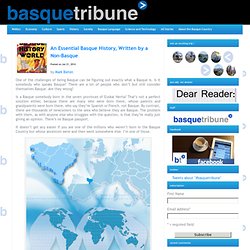

Sans titre. C'est dans la partie occidentale de la Chrétienté que Noël connut les plus grandes solennités, pour avoir « annexé » peut‑être d'antiques festivités païennes correspondant au solstice d'hiver, au moment où la saison froide, parvenue au sommet de sa course, reprend ensuite l'allongement régulier de ses jours.

Au sein de la longue nuit hivernale, l'homme se chauffait au foyer rayonnant dans l'ardeur de la fête et laissait éclater son allégresse et son espérance dans la victoire de la lumière sur les forces obscures et le triomphe des naissances qui perpétuent sa descendance et son environnement naturel. Sans titre. Pays basque, le peuple à part. Antérieur aux Ibères, le Basque est accroché à sa terre depuis la nuit des temps.
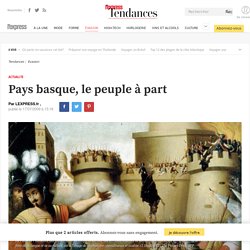
L'ADN ancien résout le puzzle de l'origine des Basques - Gasconha.com. Beaucoup de choses dans cette intervention, auxquelles répondre.
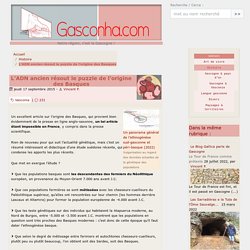
"Vascon" me semble, pour ma part, le terme le plus neutre pour englober la réalité commune aux civilisations basque, gasconne et de l’Espagne septentrionale qui s’y rapporte. Le terme de "vascon" a certes une origine bien précise, celle des habitants autochtones de la Navarre et d’une partie du Haut Aragon, mais le terme a migré, tout comme celui d’Aquitaine d’ailleurs.
Le fait vascon en Gascogne gêne-t-il ? Je n’en suis pas persuadé. Je pense que la France se moque mal du folklorisme et laisse ce dernier vivre, s’il n’est pas une menace pour l’unité nationale et permet de beaux paysages ethniques. On peut donc développer tous les mythes que nous voulons, l’État français s’en fout. Est-ce que cela gêne les Basques ?
Ce qui se passe à Sauveterre ou Peyrehorade a une importance à Saint-Palais ? Donc cela gêne qui ? For what they were... we are: Iberian genetic clusters. I've been the last two weeks or so chewing on this pre-pub and there's a point when no more chewing seems to be useful.
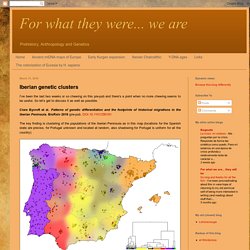
So let's get to discuss it as well as possible. Clare Bycroft et al. L'ADN ancien résout le puzzle de l'origine des Basques - Gasconha.com. Ancient DNA cracks puzzle of Basque origins. Image copyright AFP DNA from ancient remains seems to have solved the puzzle of one of Europe's most enigmatic people: the Basques.
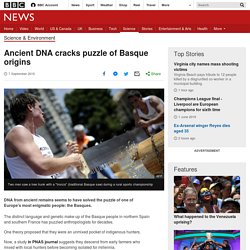
The distinct language and genetic make-up of the Basque people in northern Spain and southern France has puzzled anthropologists for decades. One theory proposed that they were an unmixed pocket of indigenous hunters. Now, a study in PNAS journal suggests they descend from early farmers who mixed with local hunters before becoming isolated for millennia. The Basques have unique customs and a language - Euskera - that is unrelated to any other spoken in Europe, or indeed the world. Nestled in a mountainous corner of Atlantic Europe, they also show distinct genetic patterns to their neighbours in France and Spain. For what they were... we are: France's autosomal genetics highlight Gascon-Basque distinctive cluster. A rather decent analysis of French autosomal genetics has been privately pre-published recently (thanks to Jean Secques for calling my attention to it and to the lead author for making it available online).
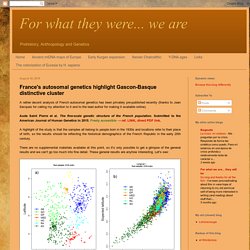
Aude Saint Pierre et al. The fine-scale genetic structure of the French population. Submitted to the American Journal of Human Genetics in 2015. Freely accessible → ref. LINK, direct PDF link. A highlight of the study is that the samples all belong to people born in the 1930s and locations refer to their place of birth, so the results should be reflecting the historical demographics of the French Republic in the early 20th century. Apirilean zabalduko ditu ateak Chillida Leku Museoak - Albisteen atala - Kultura - Kultura.
Zortzi urte baino gehiagoz itxita egon ostean, Chillida Leku museoak apirilean irekiko ditu berriro bere ateak.
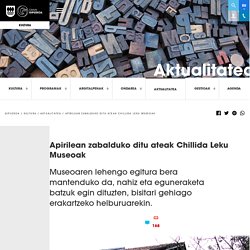
Eduardo Chillida eskultorea jaio zeneko 95. urteurrena betetzen den egun berean eman du albistearen berri familiak. Espazioa egoera onean dagoen arren, “errespetuzko eguneraketa” batzuk egin dizkiote. Gune nagusia XVI. mendeko Zabalaga baserria izango da. Argiteria, sabaiaren isolamendua eta irisgarritasuna hobetu dituzte, besteak beste, Luis Laplace arkitekto argentinarrarekin eta Jon Essery eskultorearen bilobarekin batera. Goyetche Family - The Basques In Atlantic Canada. The Pirate Connection...
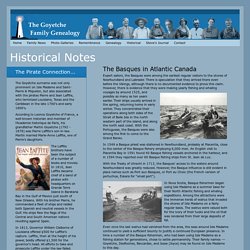
The Basques in Atlantic Canada Expert sailors, the Basques were among the earliest regular visitors to the shores of Newfoundland and Labrador. There is speculation that they arrived there even before the Vikings, although there is no documented evidence to prove this claim. However, there is evidence that they were making yearly fishing and whaling voyages by around 1525, and possibly as many as ten years earlier.
Their ships usually arrived in the spring, returning home in early winter. The Goyetche surname was not only prominent on Isle Madame and Saint- Pierre & Miquelon, but also associated with the pirates Pierre and Jean Laffite, who terrorized Louisiana, Texas and the Caribbean in the late 1700's and early 1800's. Literaturaren zubitegia - Itxaro Borda. Susa literatura - Bestaldean. Ten Creepy Images of the Shrunken Heads of Ecuador. Headhunting is a practice that has been carried out by numerous cultures throughout the world.

For instance, during the Qin dynasty in ancient China, it is claimed that soldiers collected the heads of their dead enemies, and tied them around their waists. This was intended to terrorise and demoralise their enemies. Despite the fact that headhunting was not too uncommon a practice, the shrinking of human heads is one that was unique to the Jivaro natives of Ecuador and Peru. The process of making a shrunken head began by obtaining a human head in battle. A head was removed from the body by cutting the skin at the extreme base of the neck. After this, the head was dried so that it would continue to shrink.
Head shrinking was undertaken to appease the spirits of slain ancestors. Shrunken head at Pumapungo Museum, Cuenca. A shrunken head, Jivaro Indian, Ecuador, S.America Wellcome Images (Wikimedia Commons) Eusko Abendaren Ereserkia. An Essential Basque History, Written by a Non-Basque. Posted on Jan 21, 2014 by Mark Bieter.
